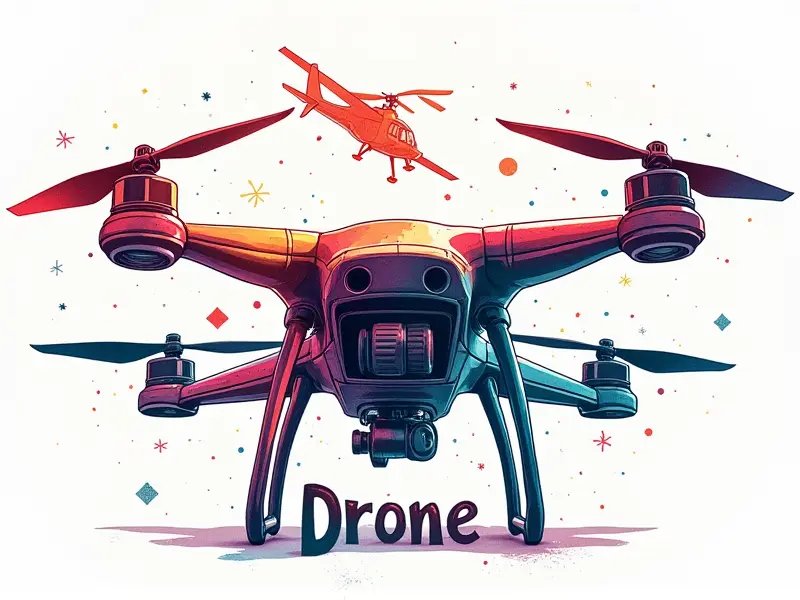How to launch an RC plane?

Mastering RC Plane Takeoff Techniques
Launching your remote-controlled (RC) plane is a critical skill that can make or break your flying experience. Proper takeoff techniques are essential for ensuring the safety of both you and your aircraft, as well as achieving optimal flight performance. This article will guide you through mastering these crucial skills.
Perfect Your RC Plane Launch Skills
To perfect your launch skills, start by understanding the aerodynamics involved in takeoff. The angle of attack, airspeed, and weight distribution all play significant roles in a successful launch. Practice makes perfect; spend time familiarizing yourself with your plane's behavior on the ground before attempting to fly it.
Step-by-Step Guide to RC Plane Takeoffs
- Pre-flight Checks: Ensure all components are securely attached and functioning correctly. Check battery levels, propeller alignment, and control surface adjustments.
- Select a Suitable Launch Area: Choose an open space free from obstacles and with sufficient wind conditions for takeoff.
- Warm-Up Procedure: Run the engine to warm it up before attempting any launches. This helps prevent mechanical issues during flight.
- Throttle Control: Gradually increase throttle while maintaining steady control over your plane's direction and altitude.
Tips for Smooth RC Plane Launches
- Practice in calm weather conditions to minimize the impact of wind gusts on takeoff.
- Use a launch ramp or catapult system if available, as these can provide consistent and powerful launches.
- Keep your plane's center of gravity properly balanced for optimal performance during takeoff.
How to Safely Launch an RC Plane
Safety should always be a top priority when launching any aircraft. Follow these guidelines:
- Wear Protective Gear: Use goggles and gloves to protect yourself from potential hazards.
- Avoid Crowded Areas: Launch in open spaces away from people or structures that could be damaged by your plane.
- Check for Obstacles: Scan the area thoroughly before initiating takeoff to avoid any unexpected objects.
RC Plane Takeoff 101: A Beginner's Guide
If you're new to RC planes, understanding basic principles is crucial. Start with simple models and gradually work your way up as you gain experience:
- Choose the Right Model: Opt for an easy-to-fly trainer plane designed specifically for beginners.
- Learn Basic Controls: Familiarize yourself with throttle, elevator, aileron, and rudder controls before attempting takeoff.
Secrets to Successful RC Plane Takeoffs
Successful launches often depend on subtle nuances that can make all the difference. Here are some insider tips:
- Practice Ground Handling: Spend time maneuvering your plane on the ground to improve control and reaction times.
- Monitor Weather Conditions: Pay attention to wind direction and speed, as these can significantly affect takeoff performance.
Essential Steps for RC Plane Takeoff
The following steps are essential for a smooth and safe launch:
- Inspect Your Equipment: Regularly check your plane's components to ensure they are in good working order.
- Understand Wind Patterns: Learn how wind affects takeoff and adjust your technique accordingly.
RC Plane Launch: From Novice to Pro
Moving from a novice to a pro takes time, patience, and practice. Here’s what you need to do:
- Join Local Clubs: Participate in RC flying communities where experienced pilots can offer advice and guidance.
- Participate in Competitions: Enter contests to challenge yourself and improve your skills under pressure.
The Art of RC Plane Takeoff
Mastery of takeoffs is both an art and a science. It requires technical knowledge, physical dexterity, and mental acuity:
- Technical Proficiency: Understand the mechanics behind your plane's operation.
- Fine Motor Skills: Develop precise control over your aircraft during takeoff.
The Art of RC Plane Launching
Landing is just as important as launching, but this guide focuses on the critical first moments when your plane takes to the sky. By mastering these techniques, you'll be well on your way to becoming a skilled RC pilot:
- Continuous Learning: Stay updated with new technologies and methodologies in RC flying.
- Enjoy the Journey: Remember that every flight is an opportunity to learn something new.
Conclusion
Mastery of RC plane takeoffs is a skill that requires dedication, practice, and patience. By following these guidelines and tips, you'll be able to launch your aircraft confidently and safely. Whether you're a beginner or an experienced pilot looking to refine your techniques, the art of RC plane launching offers endless opportunities for growth and enjoyment.

